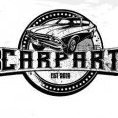-
Welcome to Auto Parts Forum
Whether you are a veteran automotive parts guru or just someone looking for some quick auto parts advice, register today and start a new topic in our forum. Registration is free and you can even sign up with social network platforms such as Facebook, X, and LinkedIn.
Selling Tie Rods and Steering Components
-
Similar Topics
-
By Dorman Products
The easy fix for Ram trucks with electronic power steering problems | Dorman 601-903
-
By Mypafway
Mypafway
https://mypafway.com/
Mypafway is a marketplace for online distribution of automotive part information and one of the leading providers of online marketing services for manufacturers, suppliers and retailers. I'm looking for Economic and Strategic Buyers for Mypafway. You can hit me up via email at [email protected] or on social media. Thanks.
-
-
By CarPartAU
Are you looking for some stores to buy used or new car parts? If so, then Car Part is the place for you. Rather than sharing a limited list of stores, we at Car Part have come with the list of the best link hidden, please login to view. These sites will connect you with a large number of car part sellers across Australia. Without wasting much time, fill out the form and click send a request button. To know more, visit us today.






Recommended Posts
Join the conversation
You can post now and register later. If you have an account, sign in now to post with your account.
Note: Your post will require moderator approval before it will be visible.